AIM-9L/M missile carriers for Ukrainian air defense
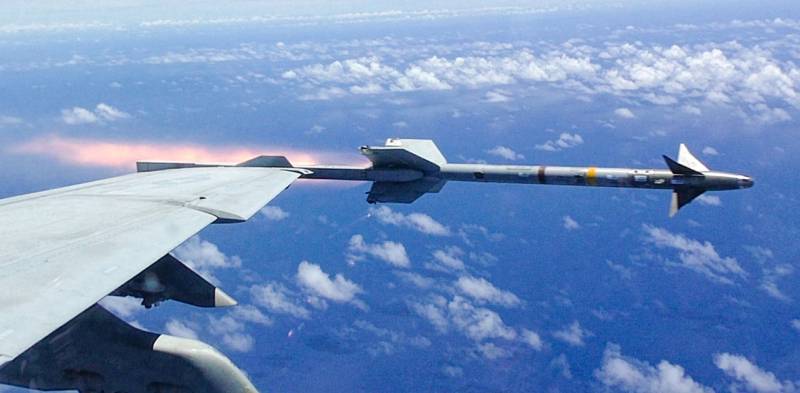
AIM-9M missile launch
In recent months, foreign countries have included AIM-9 Sidewinder guided air-to-air missiles in military aid packages for Ukraine several times. Due to the lack of suitable air platforms, they are planned to be used as part of ground-based air defense systems. It has not yet been announced which air defense systems will receive them. These may be old types of products removed from storage, or modern systems modified as necessary.
Help packages
Canada was the first to decide to supply Sidewinder missiles to Ukraine. In May, it announced the transfer of 43 such products. Judging by open data, they were talking about missiles of the old modification AIM-9L from the warehouses of the Canadian army. On what platforms and how should the Kiev regime use this? weapon, not reported.
On August 29, the US Department of Defense approved and announced the next, already 45th, package of assistance to the Kyiv regime within the framework of “presidential powers” (PDA). It was planned to ship various property worth $250 million, incl. an undisclosed number of AIM-9M missiles. The volumes and timing of such deliveries have traditionally not been reported. At the same time, in the press release about the package it was mentioned that the missiles are intended for use in air defense systems.
On September 21, Sidewinder products, not the latest modification, were included in the 47th PDA assistance package. As before, the details of the future delivery remained unknown and only the scope of application of the missiles was named - ground-based air defense systems.
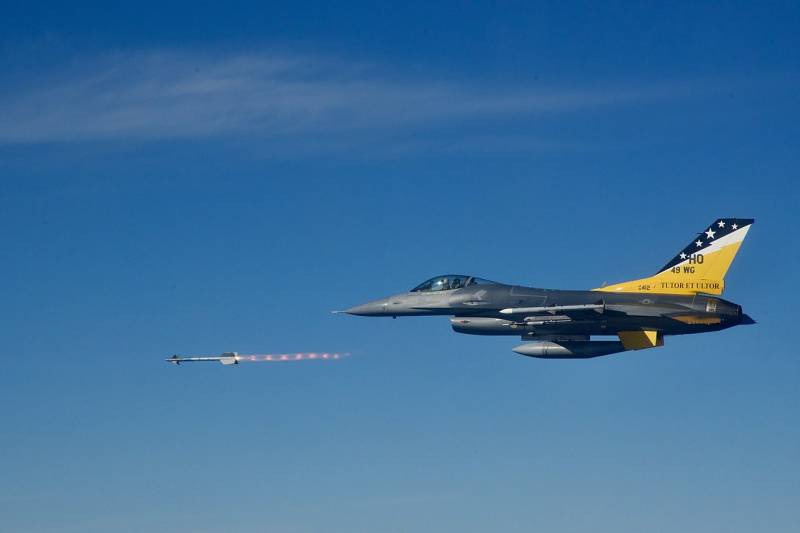
F-16 fighter and AIM-9 missile
The 48th “presidential” military aid package was approved on October 11. It again included AIM-9M air-to-air missiles in an unknown quantity. The total cost of these and other products planned for shipment reached $200 million.
Thus, in just a few months, Ukraine was promised four batches of AIM-9 missiles of two modifications. The total number of missiles to be delivered remains unknown. It will probably be three-digit, and it cannot be ruled out that it will further increase due to the following deliveries. At the same time, the purpose of the bulk of such missiles has been revealed - they are planned to be used in the field of air defense.
Media problem
In the announced deliveries of Sidewinder missiles, the greatest interest is not in these products themselves and their capabilities, but in the intended scope of application. Air-to-air missiles are apparently not planned to be used as initial aircraft weapons. They will be deployed on some ground platforms.
Refusal to use AIM-9L/M missiles in aviation quite understandable. Such missiles are incompatible with Ukraine's existing Soviet-style fighters. The possibility of modifying the carrier aircraft cannot be ruled out, but it could be considered inappropriate. In addition, the state of Ukrainian tactical aviation leaves much to be desired and is constantly deteriorating.
A way out of the situation could be NATO-style aircraft. However, the transfer of American F-16 fighters, fully compatible with AIM-9, is still at the stage of promises. The timing and volumes of such deliveries remain uncertain.
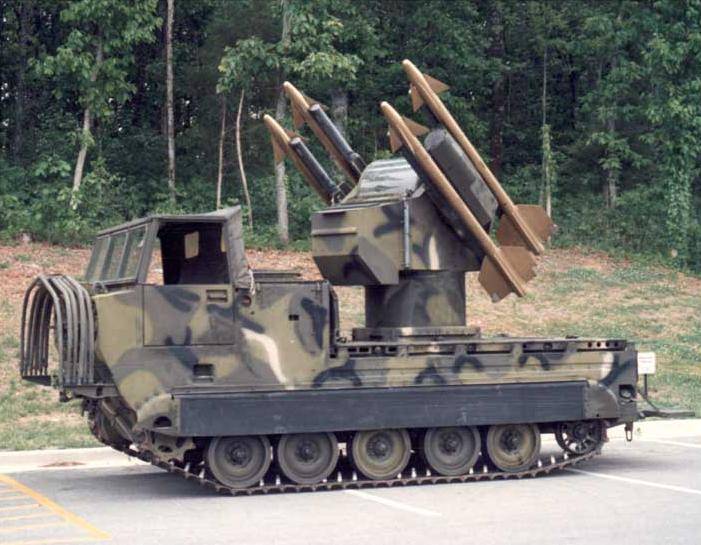
M48 Chaparral self-propelled air defense system with MIM-72 missiles based on AIM-9
At the same time, the United States and Canada nevertheless decided to send Sidewinder missiles to Ukraine, and in significant quantities. It should be expected that it will soon become known exactly how and in what complexes they will be used. In general, at the moment we can assume two options for such missile deployment, with their pros and cons.
Obsolete product
It should be recalled that the United States has experience deploying AIM-9 air-to-air missiles on ground platforms. Thus, in the late sixties, the Chaparral air defense system was developed for the ground forces, equipped with MIM-72 missiles - a modified version of the Sidewinder. However, significant changes to the rocket were not required.
The Chaparral air defense system was built on the M730 tracked chassis, based on the M113 armored personnel carrier, or on a wheeled semi-trailer. There was also a ship version. In all cases, the basis of the complex was a combat module with an operator-gunner's cabin and launchers. The module had four swinging guides with open missile placement. Initially, the search for targets was carried out only visually, incl. according to external target designation. Subsequently, the modernized Chaparral received an optical-electronic station.
The MIM-72 missile was an AIM-9D product with a slightly modified airframe. Subsequently, other modifications of the missile were included in the air defense system, thereby improving the tactical and technical characteristics.
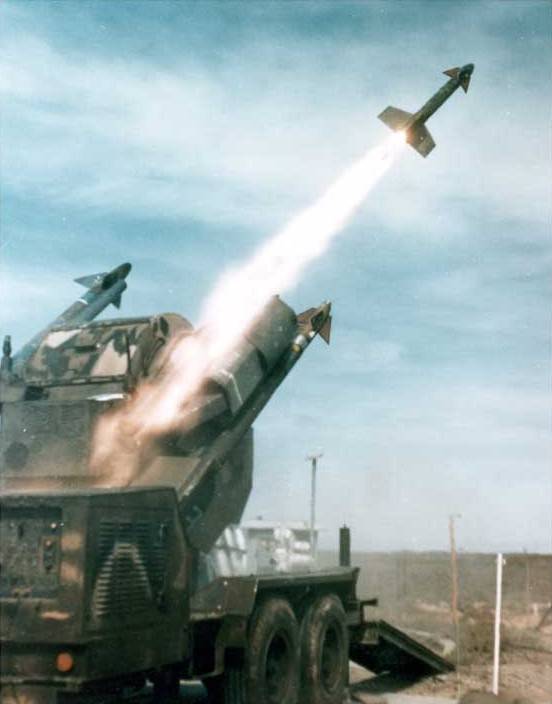
"Chaparral" on a semi-trailer launches a rocket
The main operator of the Chaparral air defense system was the US ground forces. This technique was used until the second half of the nineties, when it was abandoned due to reasons of moral and physical obsolescence. In addition, M48/MIM-72 were supplied to eight foreign countries. Some of them have not yet abandoned the old complex.
Contemporary pattern
Since the late nineties, the American and Norwegian industries have been promoting their joint development on the market - the NASAMS stationary air defense system. Subsequently, the original project developed, resulting in several modifications of the complex with different features and innovations. In the context of the latest News The newest version of NASAMS 3 looks the most interesting.
In the first version, the NASAMS complex used modified AIM-120 AMRAAM medium-range aircraft missiles. At the end of the tenth years, a modification of NASAMS 3 was developed with a number of important innovations. In particular, this air defense system received the ability to use AIM-9X Block II aircraft missiles. Whether such a complex can use Sidewinder products of previous modifications is unknown. At the same time, they are at least compatible in size and various units.
NASAMS air defense systems of all versions entered service with almost a dozen countries. Last year, Ukrainian air defense formations were among the operators of such equipment. They were given a number of current NASASM 2 and AIM-120 missiles for them.
Property for shipment
As you know, the United States and NATO countries help the Kyiv regime mainly through their armies. Most of the property, weapons and ammunition to be sent to Ukraine are taken from their own units and warehouses. The AIM-9L/M air-to-air missiles for Ukrainian air defense will not be an exception. The same can be done with air defense systems for their use, but such deliveries may have their own specifics.
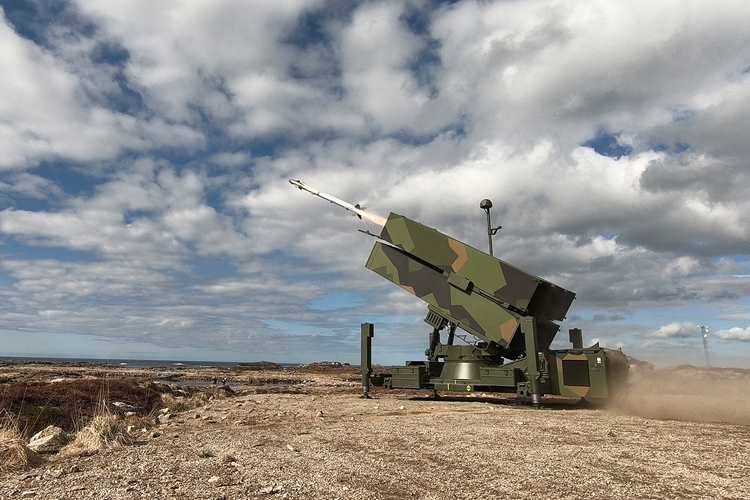
NASAMS product with AIM-9X rocket
If the United States decides to help the Kyiv regime with Chaparral complexes, then their delivery will not encounter any fundamental difficulties. In the nineties, when they were removed from service, some of these vehicles were sent for storage. Now they can be reactivated, restored and/or updated and transferred to Ukraine. It should be taken into account that the Chaparrals remain in service in a number of armies around the world and may remain in storage in others.
Deliveries of NASAMS air defense systems to Ukraine have generally already been established, and the shipment of new products of this type has been repeatedly reported. Transferring new such products to the Kyiv regime is not difficult. At the same time, the compatibility of such systems with AIM-9 missiles of older modifications raises questions. They are noticeably different from the latest AIM-9X, and it cannot be ruled out that their use requires modification of the complex.
Anti-aircraft perspective
Thus, the United States and Canada are proposing a new way to restore the destroyed Ukrainian air defense. In addition to existing NATO and Soviet-style systems, it is proposed to transfer several batches of AIM-9 aircraft missiles and compatible ground-based weapons to the Kyiv regime. At the same time, it has not yet been publicly announced which anti-aircraft systems will use Sidewinder products.
Apparently, deliveries of American missiles have already begun or will start in the near future. In addition, we can expect the start of shipments of ground-based anti-aircraft systems. Over the coming weeks or months, all of these products may end up at the front or in important rear areas. And then all the necessary information for conclusions and assessments will appear.
Information